Cannabis
AVB – What it is & 10 Ways to Use it
After a casual vape sesh, some may fall into the habit of throwing out the AVB, otherwise known as already vaped bud.
Next time you think this is the move. Stop. Steer your weed away from the garbage can and reassess the decision. In your hand is a fresh batch of potential.
Already Vaped Bud, or AVB for short, is just as it sounds. It’s the weed left over after using a dry herb vaporizer.
Unlike smoking flower where the plant matter is burnt, vaporizing leaves behind brownish remnants of weed, and, depending on your vaping technique, there might still be a substantial amount of THC remaining in the dry bud.
So, how much THC is there?
There are many ways to determine how to use these lovely weed leftovers. In this article, we will talk about the benefits of AVB and how to use it to make the most of your weed.
AVB Potency
The primary factors that will help indicate AVB’s potency are the vaping temperatures and length of the vape sesh.
Cannabinoids activate at different temperatures. Adjusting the vaping temp allows you to, more or less, control the effects and flavour.
For instance, THC’s activation temperature is 157°C or 315°F. Vaping at this temperature for 5 minutes is a surefire way to have strong AVB.
However, if you’re going for a full-spectrum vape, Myrcene, the sedating terpene, becomes active at 168°C, or 334°F. It’ll take cranking up the vape to 180°C for CBD and 220°C for THCV.
At that point, it’s redundant to save the already vaped bud.
Another perk of keeping your AVB is that it is already decarboxylated cannabis.
As mentioned, cannabinoids activate at specific temperatures. Anyone that has made edibles knows this. By vaping at 157C, AVB is “decarbed.” Thus making it edible, providing more versatility when it comes to usage.
How to Use AVB
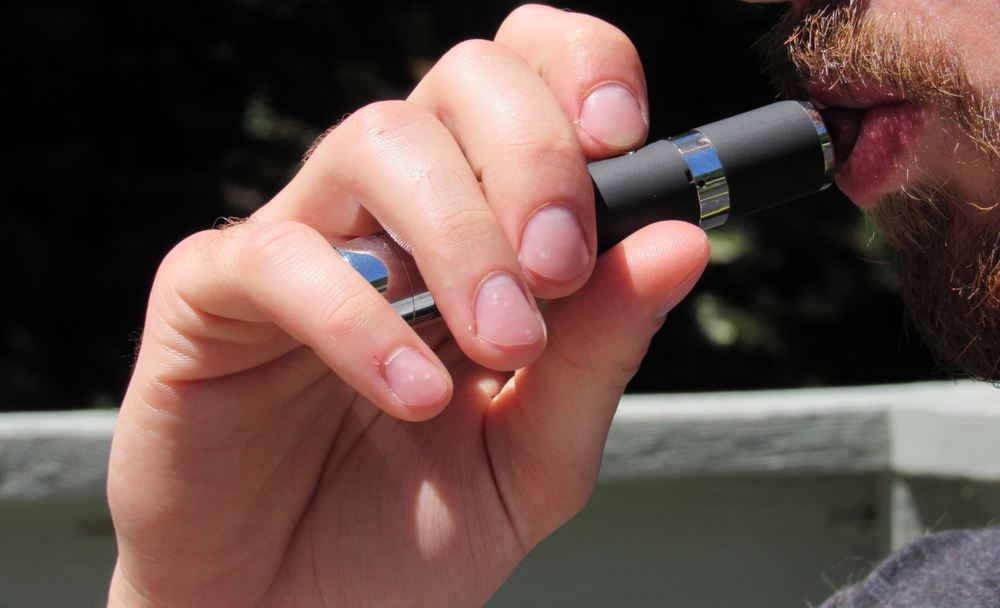
Depending on your level of adventure, taste tolerance and courage, AVB has a lot to offer. Namely in the edible department, but the choice is yours.
A fair word of warning, AVB does not feature the blissful taste of fresh cannabis. You could go as far as to say that it’s an acquired taste, to say the least.
That’s why strategy is essential, or courage, if you can stand the flavour.
Below, we will outline examples of various strategies and methods on how to use AVB.
Water Cure
The water curing process essentially uses room temperature water to steep the weed, which rids the already decarboxylated AVB of most of its funk.
You’ll need the following items to do so:
- AVB
- Cheese Cloth
- Large Mixing Bowl
- Baking Sheet and Oven
- Patience
Begin by cutting the cheesecloth into a big square. It will function similarly to a tea bag. Place the AVB in the cheesecloth and tie the corners tight. Tie them many times to avoid leaks. Once free of leaks, put it in the bowl and fill it with room temperature water.
The entire process will take roughly four to seven days to complete.
For the first couple of days, change the water every couple of hours. You can scale back to two times a day after. After about a week, the water should stay reasonably clear.
Next, take the already vaped bud and spread it on the baking sheet. Feel free to use tin foil or parchment paper to line it. Turn the oven on to 200°F and let it pre-heat.
Once ready, place the baking sheet in the oven and keep the oven door open a bit. Keep an eye on the goodies and give the AVB a shake and spread every 30 minutes to ensure that it dries evenly. The job takes roughly 2 hours to complete.
While this method is tedious, the reward is worth the time. However, if you feel like bypassing it, there are plenty of other processes to consider.
Water curing is the preferred method if you are looking to make edibles but can’t get over the unique taste of AVB.
Eat it as Is
As the bud is already decarboxylated, you can eat it with a giant spoon if your heart desires.
We wouldn’t recommend doing this, but you technically can while reaping the benefits.
Many people that want to use their already vaped bud right away will mix it with a tablespoon of peanut butter, jam or another thick substance with a decently powerful flavour to help cover up the unsavoury taste of AVB as quickly and efficiently as possible.
For those who can palate this method, we salute you, but if you’re looking for an alternative to merely powering through, there is an abundance of different options to help make the AVB go down a little smoother.
Cannabutter
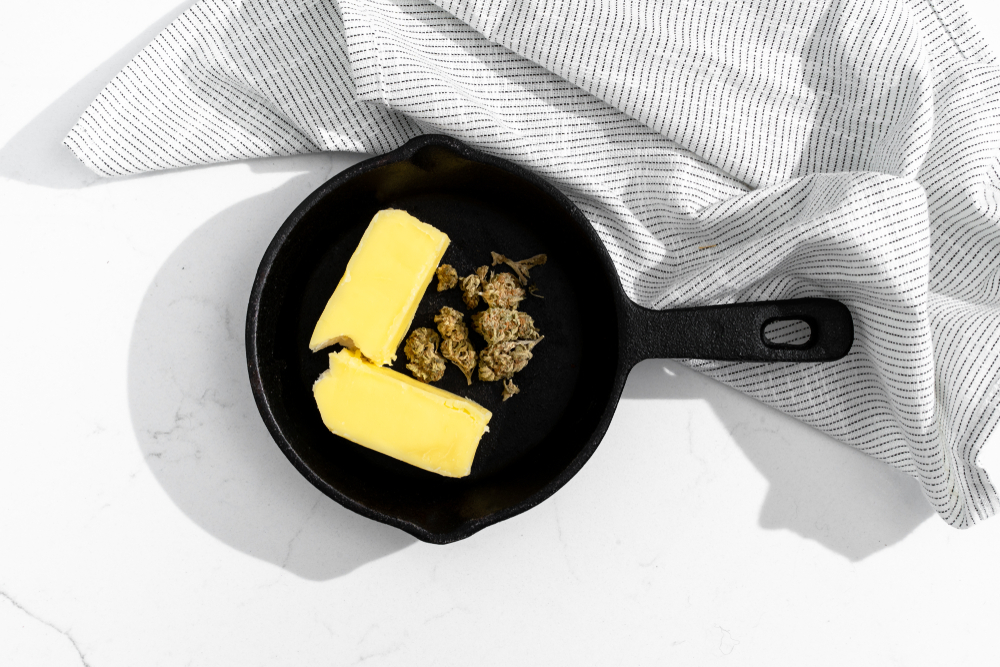
Making cannabutter is a mix of water curing and straight-up eating AVB.
Cannabutter and canna coconut oil are common base ingredients for cannabis-infused edible recipes, with both being very easy to make. If you still aren’t sure, no worries, check out our helpful how-to guide.
The equipment and ingredients are straightforward and likely things that you can already find in your kitchen, including unsalted butter, water, lightly ground weed or AVB, a baking sheet, strainer, and medium saucepan.
We say that the process is a combination of eating AVB and using the water curing method because both involve decarbing the weed in the oven and mixing with water.
After decarbing the weed, you melt the butter down in the saucepan, add some water to prevent it from burning, mix in the dried bud or already vaped bud while stirring regularly, and strain out the buds.
Then, you are free to refrigerate to ensure that it hardens and store for future use.
Tincture
Tinctures are a favourite among medicinal weed users because they are renowned for their accurate dosing and potency.
However, they can take some time to make and require patience. Whether you take it as is or integrate it into food, tinctures provide a versatility and convenience that make them very appealing to a variety of tokers.
One of the most critical features of making your own tincture is selecting the right type of alcohol to suspend the AVB in, with the ultimate goal being to find one that is safe for consumption (duh).
For example, while isopropyl alcohol is commonly used in cannabis extraction methods, it is not intended to be consumed and should not be used when making a tincture.
It is important to note that, in terms of using AVB to make a tincture, the potency isn’t going to be exactly like it would be if you were to purchase one professionally made.
In terms of making your own tincture, the process starts the same as water curing or making cannabutter in that you must decarboxylate the flower first.
From there, you mix the flower in a mason jar with the high-proof alcohol of your choosing and, after a few weeks, strain it through a coffee filter. If you don’t have the patience to wait for weeks, you can also shake it together for five minutes or so, strain, and store.
Coconut Oil
Cannabinoids are fat-soluble, which means that they bind to fat, making coconut oil an ideal form to ingest AVB since it contains plenty of fat.
Similar to making cannabutter, we would recommend water curing your AVB first to eliminate some harsh flavours before mixing with coconut oil.
In terms of making AVB coconut oil, the process is very straightforward. Below we will outline how to make it using a crockpot.
You need the following ingredients:
- 1-2 oz of ABV
- Melted coconut oil – enough to fully saturate the AVB
- Water (optional) – this will make straining easier, and you can separate and remove it later, but it does create an extra step
- Cheesecloth
Add the ABV to the crockpot and mix in enough melted coconut oil to fully saturate the weed. Then, add in the water if you choose to use it.
Cook on low heat for two hours while stirring occasionally. Once the time is up, strain with the cheesecloth.
If you add water, place the strained mixture in the refrigerator. The coconut oil will separate and rise to the top and harden. You can then break the hard ABV coconut oil and discard the dirty water.
Make Edibles
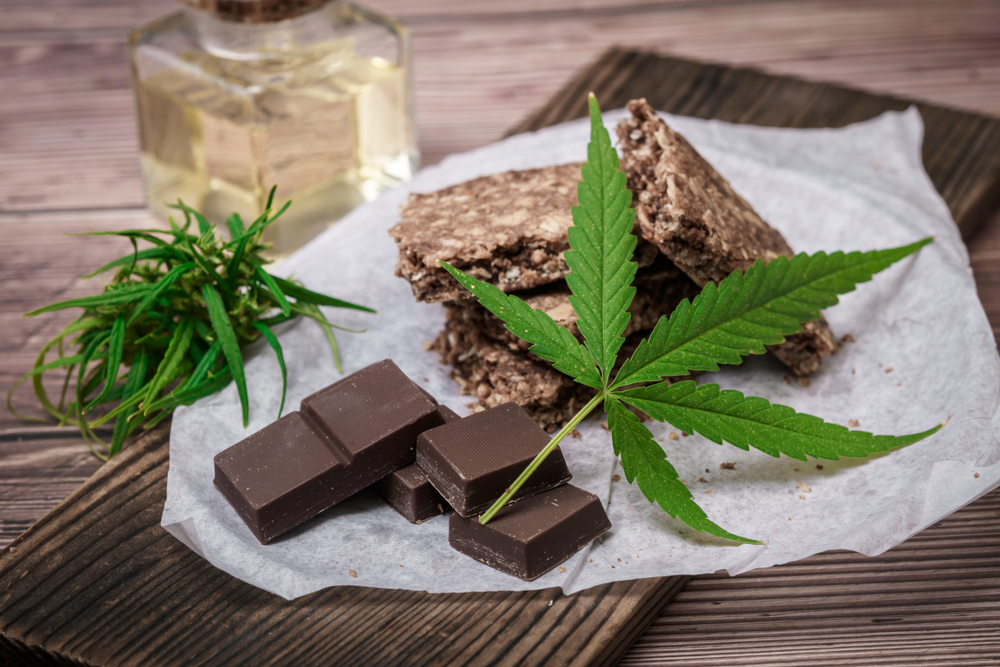
If making cannabutter feels like a chore, you can always skip straight to making edibles.
Unlike water cured AVB or cannabutter, it may not taste the best, but hey, if the objective is simply to get high, this will do the trick.
Getting high is a guarantee with a handful of AVB in a batch of regular brownies, even if you opt to skip the step of making cannabutter or canna coconut oil to mask the taste.
If you don’t want to bake or cook anything, you can also sprinkle your already vaped bud on food. Since it has already been decarboxylated through being vaped, the THC has already been activated, and you don’t need to go through any additional steps to reap the benefits.
However, while it is possible to use AVB in this way, it is not for the faint of heart. If you are opposed to adverse flavours, this may not be the technique for you. We would recommend water curing solely for the purpose of making the taste more palatable.
Capsules
If you’re looking for a method to bypass all flavour whatsoever and simply reap the benefits of AVB, capsules are your best bet.
Ingesting a capsule is also one of the most efficient methods to enjoy AVB if you are not looking to cook, bake, make cannabutter, or go through the tedious water curing process.
Capsules also serve as a very discreet way to medicate that you can take on the go.
Of course, this method’s most significant appeal is that you bypass the taste factor completely, allowing you to feel the beneficial effects without worrying about a less favourable flavour.
Making your own capsules is also super straightforward. You just need to buy empty gel capsules and fill them with AVB.
Once again, keep in mind, potency is going to vary. Start slow and work your way up. Another critical factor to consider is that, since you are ingesting the capsule, the onset time in terms of effects will take longer to feel.
So, don’t be surprised if you don’t feel it right away. Adhere to the same rule as ingesting regular edibles and wait a suitable amount of time before taking another capsule.
Beverages
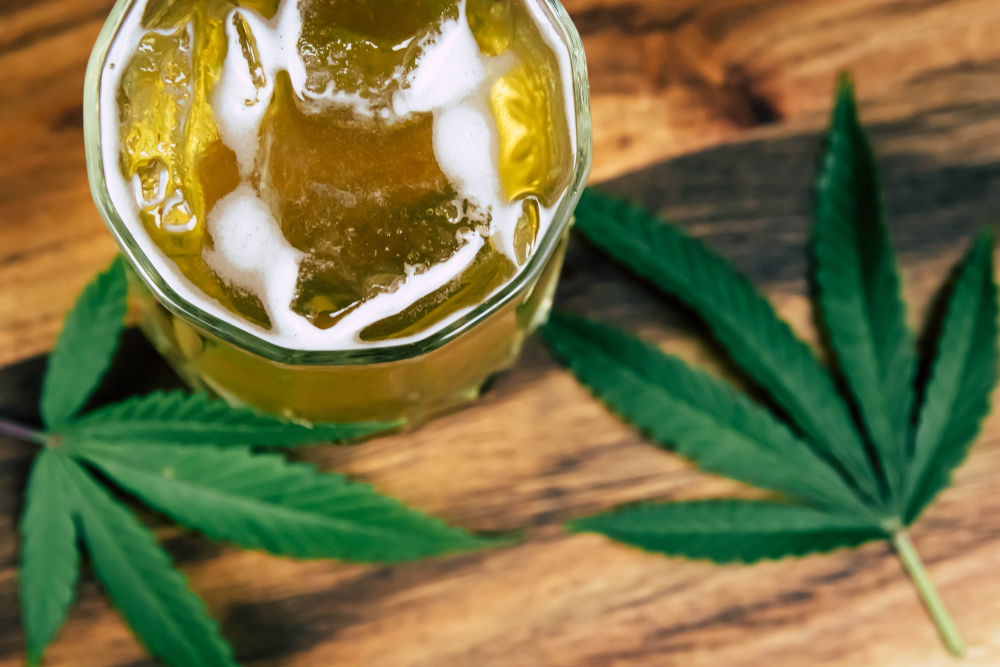
Another easy way to enjoy your AVB is by consuming it with a beverage. Some people like to mix it in with coffee, while others like making it into tea.
In terms of the ideal method, a tea bag works best, or you can always let the water boil with AVB in the water and strain it out after. If you’re more of a coffee drinker, you can add the already vaped bud into the coffee grounds when brewing.
Whatever you do, make sure to add plenty of honey, mint or any other herb because this won’t taste like your regular Starbucks order.
As stated before, since it is already decarboxylated, it’s easy to just add it into your tea or coffee to add an extra boost to your caffeine kick.
Cannabinoids are fat-soluble, which means that they bind to fat, so adding milk or creamer to your coffee or tea may be the best move.
RSO/Cannabis Oils
RSO, or Rick Simpson Oil, is often sought after by medical patients that require high doses of THC or CBD. It’s possible to use A LOT of AVB and get a strong product.
However, as we have mentioned in previous method descriptions, the potency and purity of making your own RSO will not be the same as using fresh flower or buying professionally-made RSO.
RSO is an involved process, but the product is far worth it. To make your own, you will need the following supplies.
Note: This recipe produces 60 grams of oil. However, you can easily adjust the recipe to make smaller amounts.
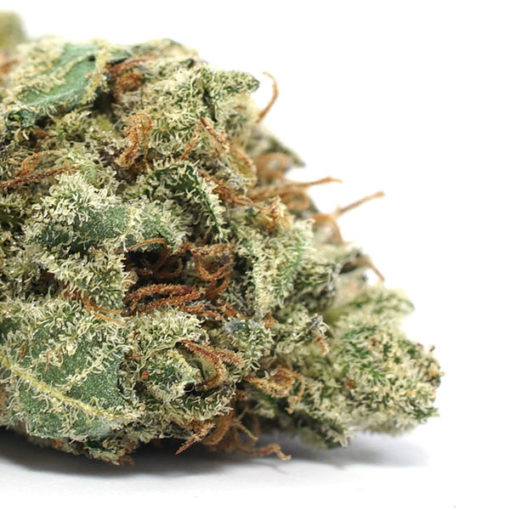
- 1 pound of dried flower (typically Indica)
- 2 gallons of solvent – Rick typically uses 99% isopropyl alcohol, but you can use others such as a wood grain alcohol
- 5-gallon bucket
- Deep bowl
- Wooden spoon
- Cheesecloth
- Rice cooker
- Plastic syringe (60 ml)
Firstly, put the dry weed in the bucket and pour the solvent to fully submerge it. Then, stir and agitate the mixture with the wooden spoon while adding the solvent into the mixture. Continue stirring for three minutes or so while the THC dissolves into the solvent.
This process will dissolve roughly 80% of the THC into the solvent.
Drain the solvent from the weed into the bowl using the cheesecloth. Then, place the plant matter back into the bucket and add more solvent and stir for another three minutes.
Drain the remaining solvent from your plant material into the bow using the cheesecloth and discard the remaining weed.
Transfer the solvent into the rice cooker until it is ¾ full and turn it on. While it isn’t necessary to use a rice cooker, it is one of the best ways to maintain a low, consistent temperature. If the mixture reaches a heat of over 148°C, the cannabinoids will degrade and cook off, and you won’t be able to use the RSO.
You shouldn’t use a Crockpot or slow cooker as an alternative because it may overheat the mixture. The rice cooker should keep a steady temperature between 98-110°C, the optimal temperature range for decarboxylation.
Once the solvent has evaporated, absorb the oil into the plastic syringe for easy dosing.
Smoking AVB
We left this one last for a reason, mostly because it should be considered only as a last resort. Or, for all we know, you’re built differently, and this is tolerable to you, in which case, more power to you.
As with other methods, the AVB will not be as potent compared to smoking fresh flower. Without sugar-coating it, it will likely not be a pleasurable or relaxing experience.
If you opt for smoking already vaped bud, prepare for a harsh, gnarly-flavoured toke.
For the rest of us that aren’t self-deprecating, smoking AVB is close to, if not the worst, experience with cannabis possible. It’s here for informational purposes only. Do not try this at home.
AVB – Make the Most of Your Weed
Whether AVB is a staple of yours already, or this is your first time hearing about it, there’s no reason not to take advantage of it.
Use your already vaped bud wisely, and it will return the favour.
Gone are the days when you vaped your weed and thought the experience was over. Now, with so many methods to utilize your AVB, you can reap the benefits for even longer and make the most of your weed while also being friendly to your wallet and getting the most bang for your buck.
Of course, in order to utilize AVB, you need to have some righteous green to start. Ensure that the bud you are purchasing comes from a reputable and reliable dispensary to ensure that it is the highest quality and best product possible.
In this way, not only are you ensuring that you have an ideal, pleasurable vape session the first time around, you are also setting yourself up nicely to save some high quality already vaped bud.

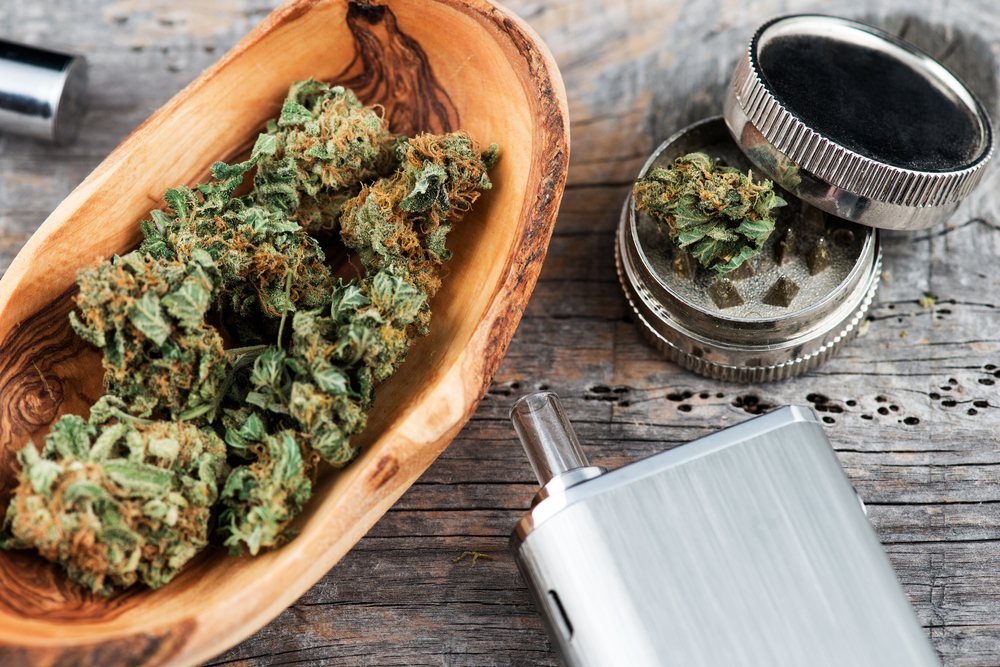
The article was really informative and well written. It seems to me that I know the author from the COMPACOM expert team. Have always enjoyed reading their detailed useful researches and comparisons. If I have any problems choosing the products I need I turn to compacom.com at once.